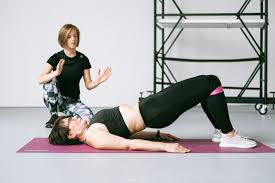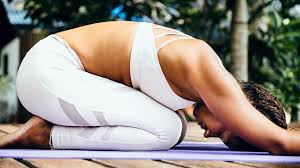How Stretching Keeps Your Body Flexible for Years
1. Maintains Muscle Elasticity
Muscles and connective tissues (like tendons and fascia) can become shorter and tighter over time, especially with age or inactivity. Regular stretching helps maintain the length and elasticity of these tissues, keeping them supple and functional.
2. Prevents Muscle Stiffness and Joint Rigidity
As we age, joints naturally lose some range of motion due to stiffness in the surrounding muscles and tendons. Stretching keeps muscles loose and balanced, which reduces pressure on joints and helps maintain healthy joint mobility.
3. Improves Posture and Alignment
Tight muscles (like hip flexors, hamstrings, or chest muscles) can pull your body out of alignment. Stretching corrects muscle imbalances, improves posture, and reduces strain on your spine and other joints.
4. Enhances Circulation
Stretching increases blood flow to muscles, which:
-
Helps deliver oxygen and nutrients.
-
Speeds up recovery.
-
Removes waste products like lactic acid.
Better circulation also contributes to healthier tissues and faster healing as you age.
5. Reduces Risk of Injury
Flexible muscles are less likely to become injured during physical activity. Stretching enhances the resilience of muscles and connective tissues, helping you avoid strains and tears.
6. Supports Functional Movement
Daily tasks like bending, reaching, or squatting require a baseline level of flexibility. Consistent stretching supports functional movement, keeping you independent and active well into older age.
7. Counteracts Sedentary Lifestyles
Modern lifestyles often involve long periods of sitting, which can cause muscle shortening (especially in the hips, back, and shoulders). Stretching reverses these effects, relieving tension and preventing chronic pain.
Tips for Long-Term Flexibility:
-
Stretch consistently: Aim for at least 3–5 times per week.
-
Warm up first: Stretch after light movement or exercise.
-
Hold stretches: 20–30 seconds per stretch, avoid bouncing.
-
Focus on full-body: Don’t just stretch one area; balance is key.
-
Incorporate dynamic and static stretching: Dynamic before workouts; static after.
Final Thought
Stretching isn’t just for athletes or yoga enthusiasts—it’s a vital part of healthy aging. By keeping your muscles and joints flexible, you’re investing in a body that moves freely, resists injury, and stays active for years to come.
Would you like a sample stretching routine for daily flexibility?






